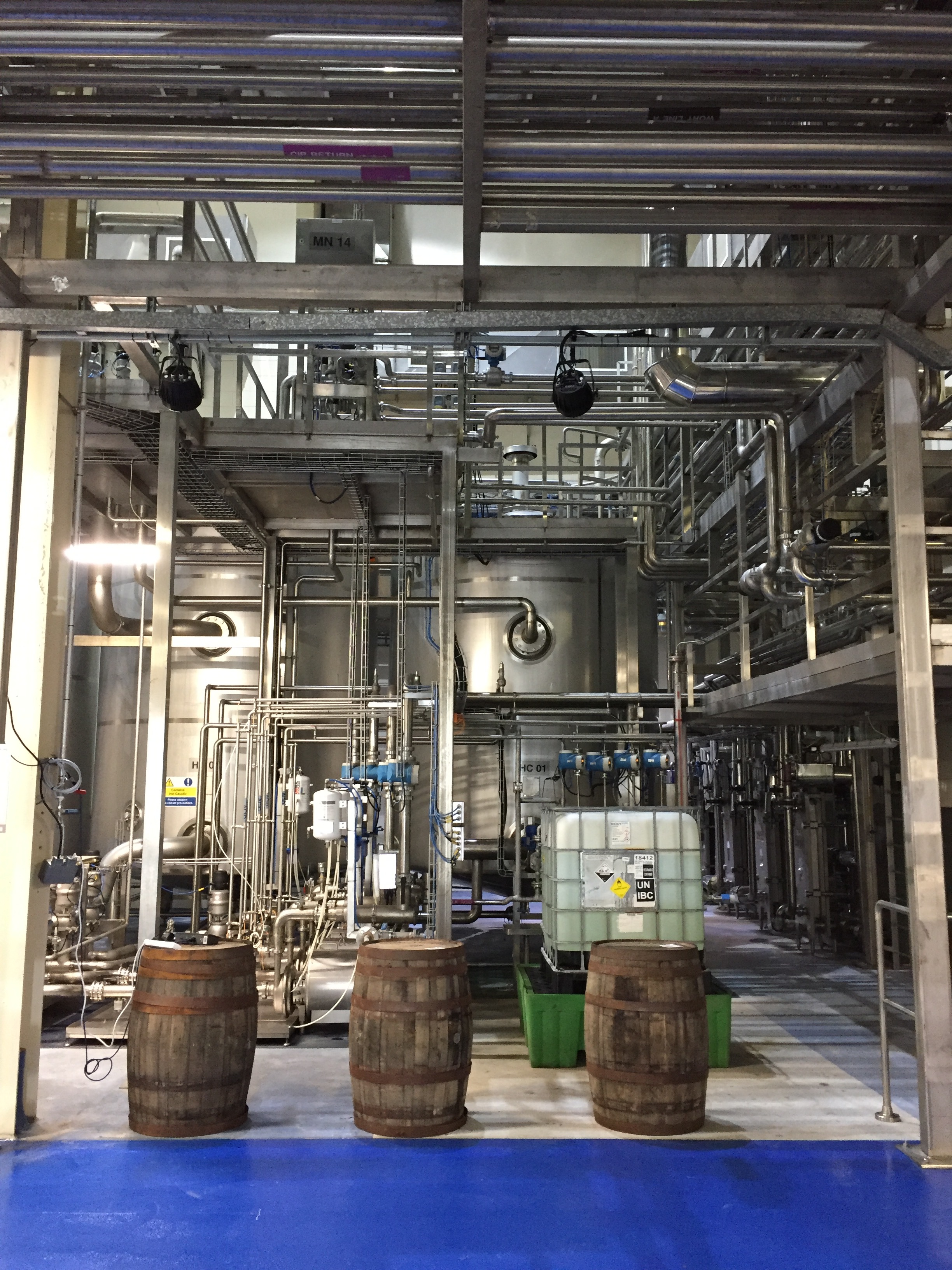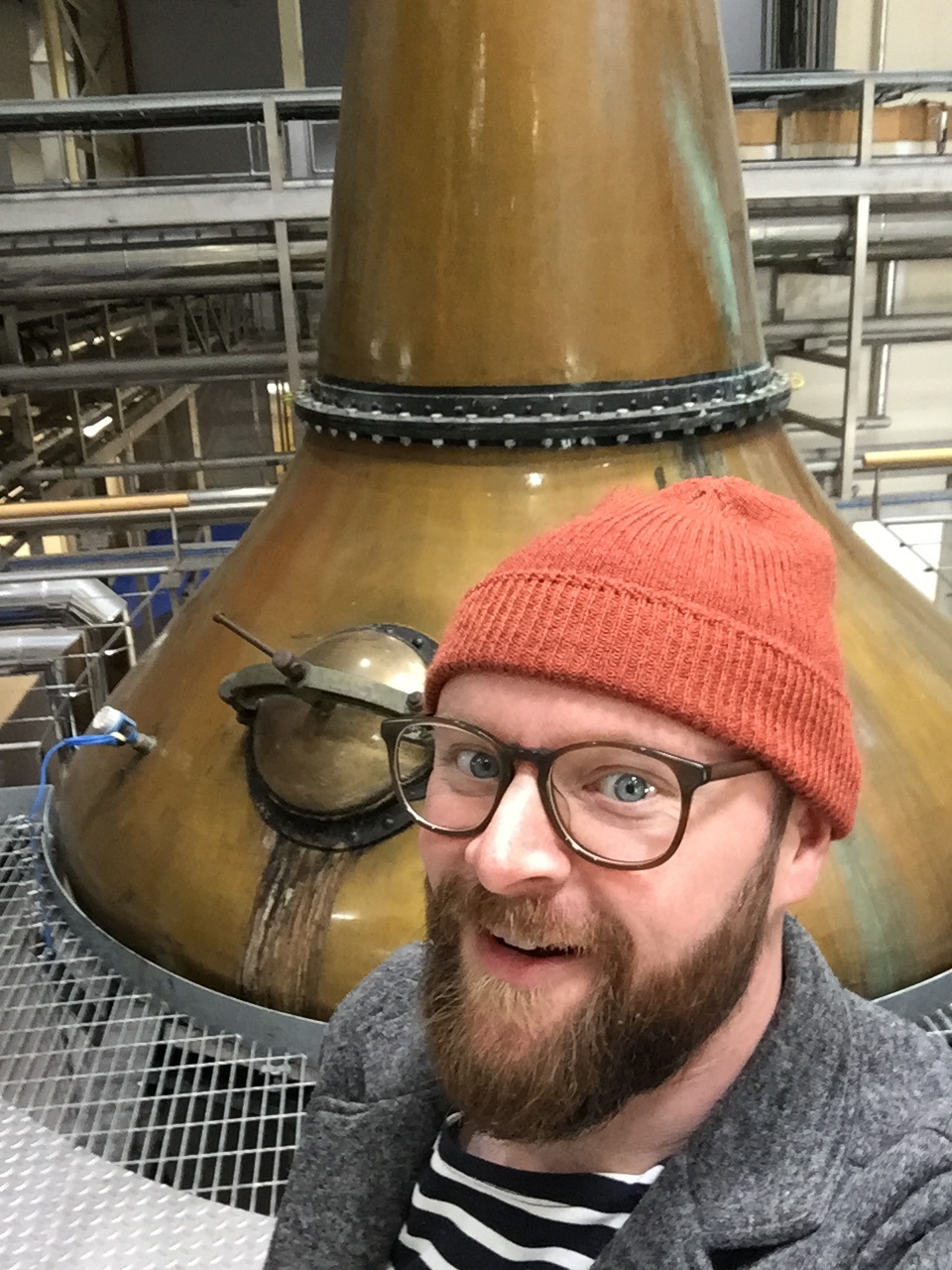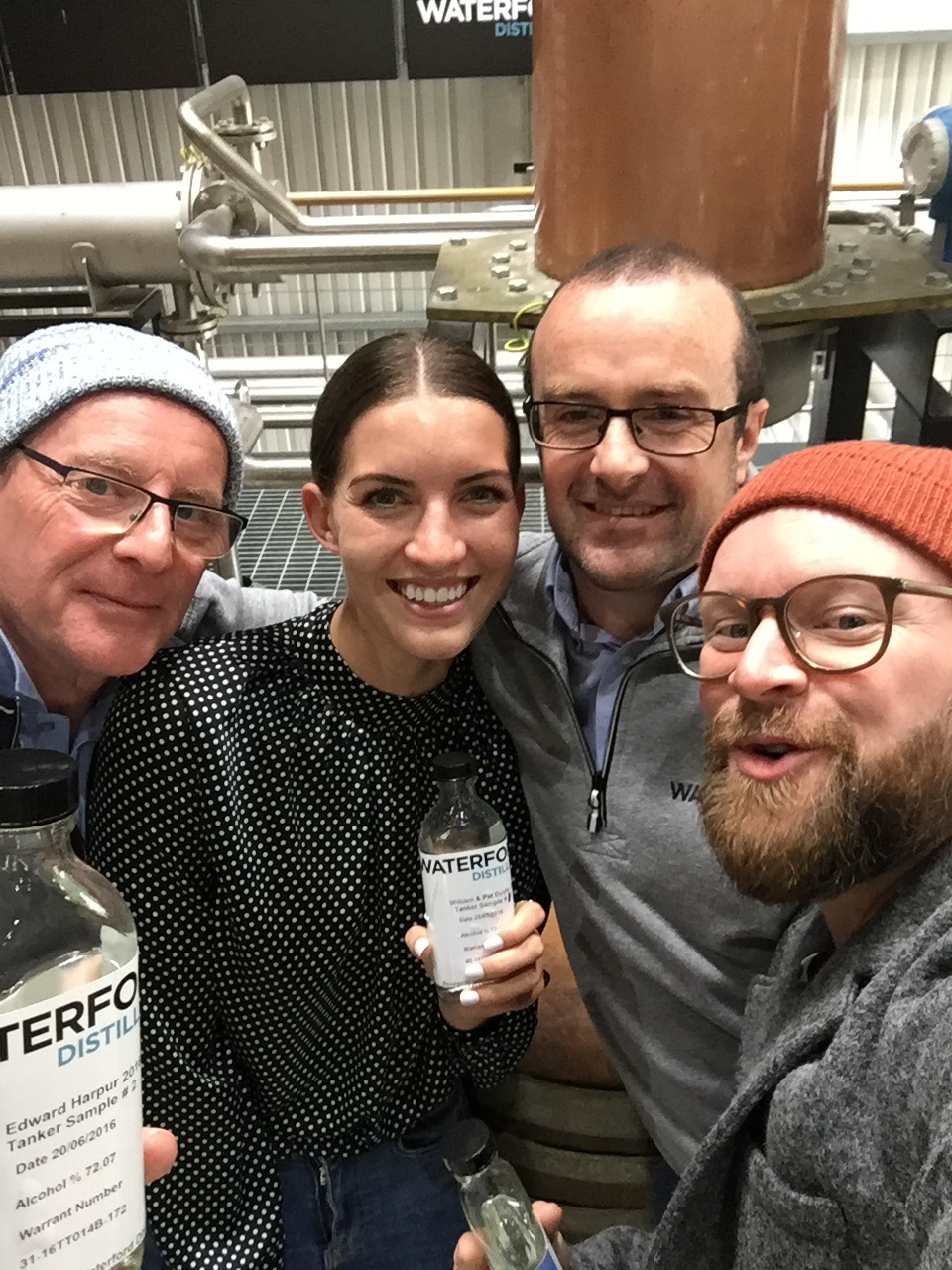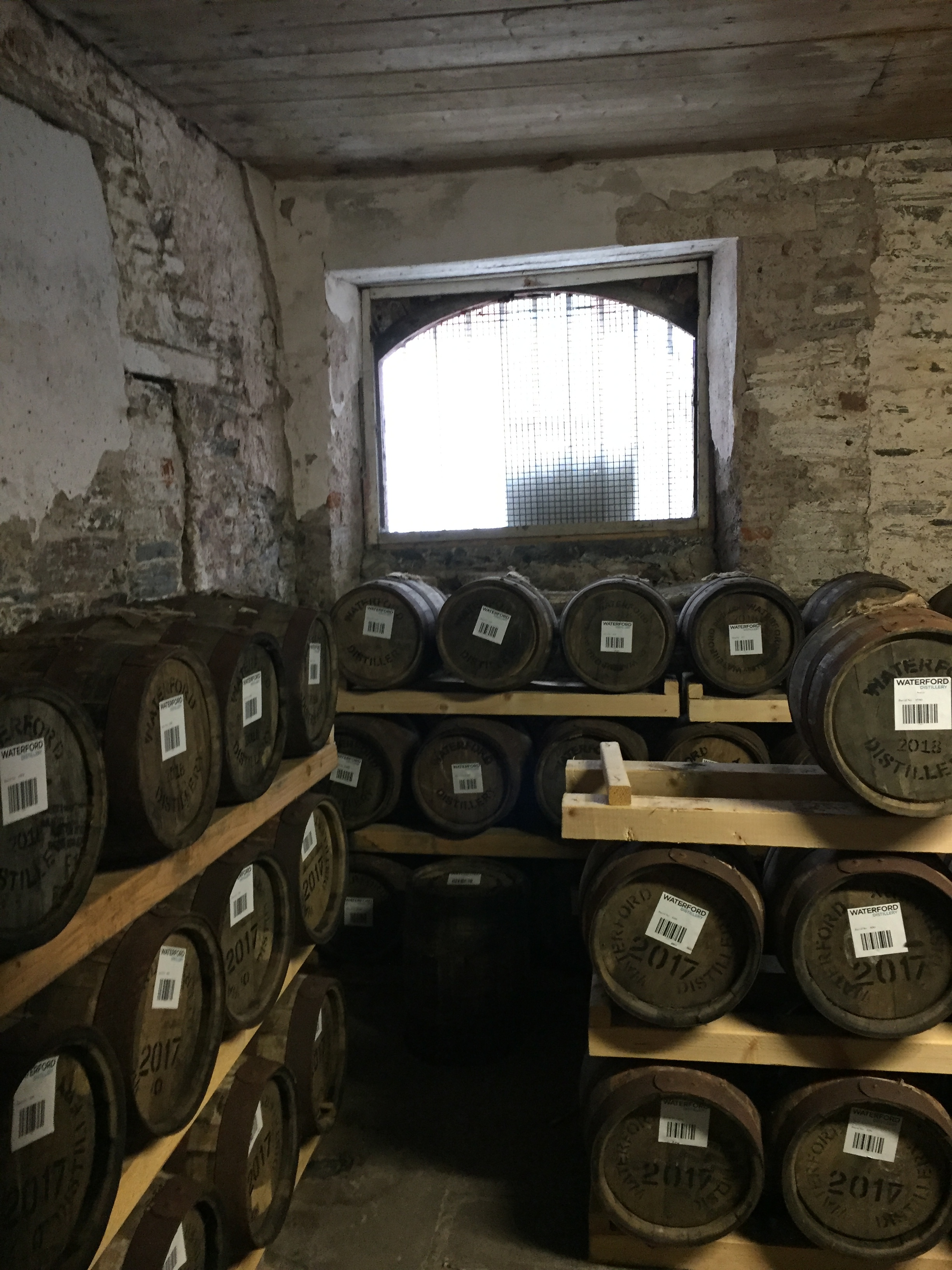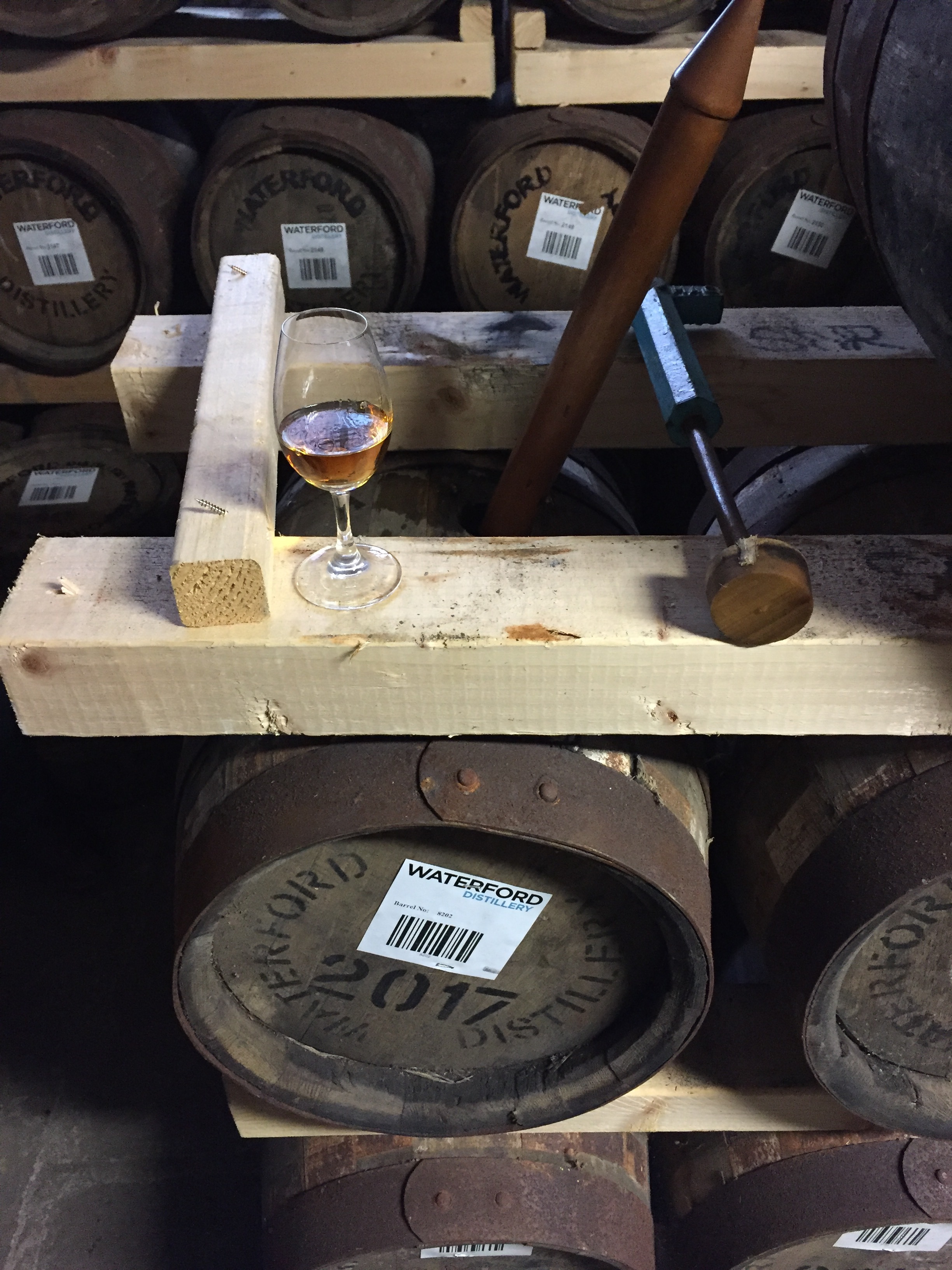Where do I start with this one. What a visit.
As some of you might know, I come from the south of Ireland and though I grew up in Cork I’ve spent every one of my 37 Summers (except one) in a small fishing village in Waterford, it’s kind of my spiritual home and I still love going there. For a few years now there has also been a new distillery there that I have written about before and recently I got a chance to visit them again. I hopped in the car with my dad and drove in the direction of the distillery and it ended up being a very special experience to me for a more personal reason. That’s not what this article is about though, it’s about whiskey.
When we arrived we were greeted very warmly by Megan and she quickly took us to see Neil, the head brewer. I’ve done a lot of distillery tours in my time and have had everything from bad to fantastic but this guy really knew his stuff and was more than happy to share it with us. Megan was fantastically genuine and friendly and ended up spending the half the day with us. After a bit of chatting and admiration of copper equipment we went to the blending room. WOW. When I visited the last time round there wasn’t much to taste except for some great new make. We still had some great poitín but were also treated to a mini tasting and blending session of some aged spirit. I felt like I was listening to a demo tape of Nirvana’s Nevermind album. The bones of something fantastic were there, still rough, not ready to go but oh man you could feel how good this is going to be! We talked a little about farms, plant protection solutions, biodiversity and organic farming. The people at the Waterford Distillery are focused on barley and wood and think if you get these right then the rest is just filling in the gaps… sounds simple right? Well basically it is but it means that you have to take all things barley and wood related even more seriously. They can tell you when (to the hour) a farmer’s barley was, planted, treated, harvested, malted, brewed, distilled and where the distillate is now. The farms have “passports” and within seconds the team is able to give you very very detailed information about how the crop was farmed, and what it’s destined to be. Does this make a huge difference to the final product? I don’t know yet but the dedication is very impressive and I’m fairly certain that it’ll pay off.
Here comes the next WOW: after we had finished up and spent some time admiring stainless steel equipment this time we moved on to the secret cave of the distillery where they keep the blood tubs. This room is a kind of a crystal ball to see what the fully aged barrels are going to be like. For anyone newer to the whiskey world it goes a bit like this: Whiskey needs wood to mature and most commonly ex-bourbon barrels are used because they are readily available and just happen to come pre-seasoned due to a quirk of the bourbon industry. They hold around give or take 200 litres of distillate and are very reliable. Blood Tubs are much smaller at around 40 litres so the contact between the distillate and the wood is much higher, thereby speeding up the maturation process and giving the producer an idea of what the whiskey of the future is going to be like when it’s ready.
We started sampling random casks and they were one better than the next. Some barrels specially for prediction, some experiments and some amazing secrets that will probably never see the light of day. Very interesting stuff and the last cask I sampled had such a concentrated, intense taste that I’m sure I could still smell/taste it later that evening while sitting outside by the sea in one of the most beautiful parts of Ireland.
If what I tried is even 10% of the quality of the final product then Irish whiskey lovers (like me) are in for a fantastic treat! Thanks again to Megan and Neil for taking the time out of their days to spend it with us. I hope this won’t be my last visit to the distillery and in my opinion it’s still one to watch for the future.
My dad and I had a great visit and a fantastic day afterwards. This was partly due to the team at the distillery. They keep things simple and reduced there and I’d like to remind you all that that’s the way to do it. The best whisky in the world isn’t fancy, it’s barley, wood, time and the people who made it. It is also effectively nothing unless you keep it simple and enjoy it with the ones you love. Take some time and appreciate all the time and work that goes into what’s in your glass. Share the moments with others and reflect on them with joy.

